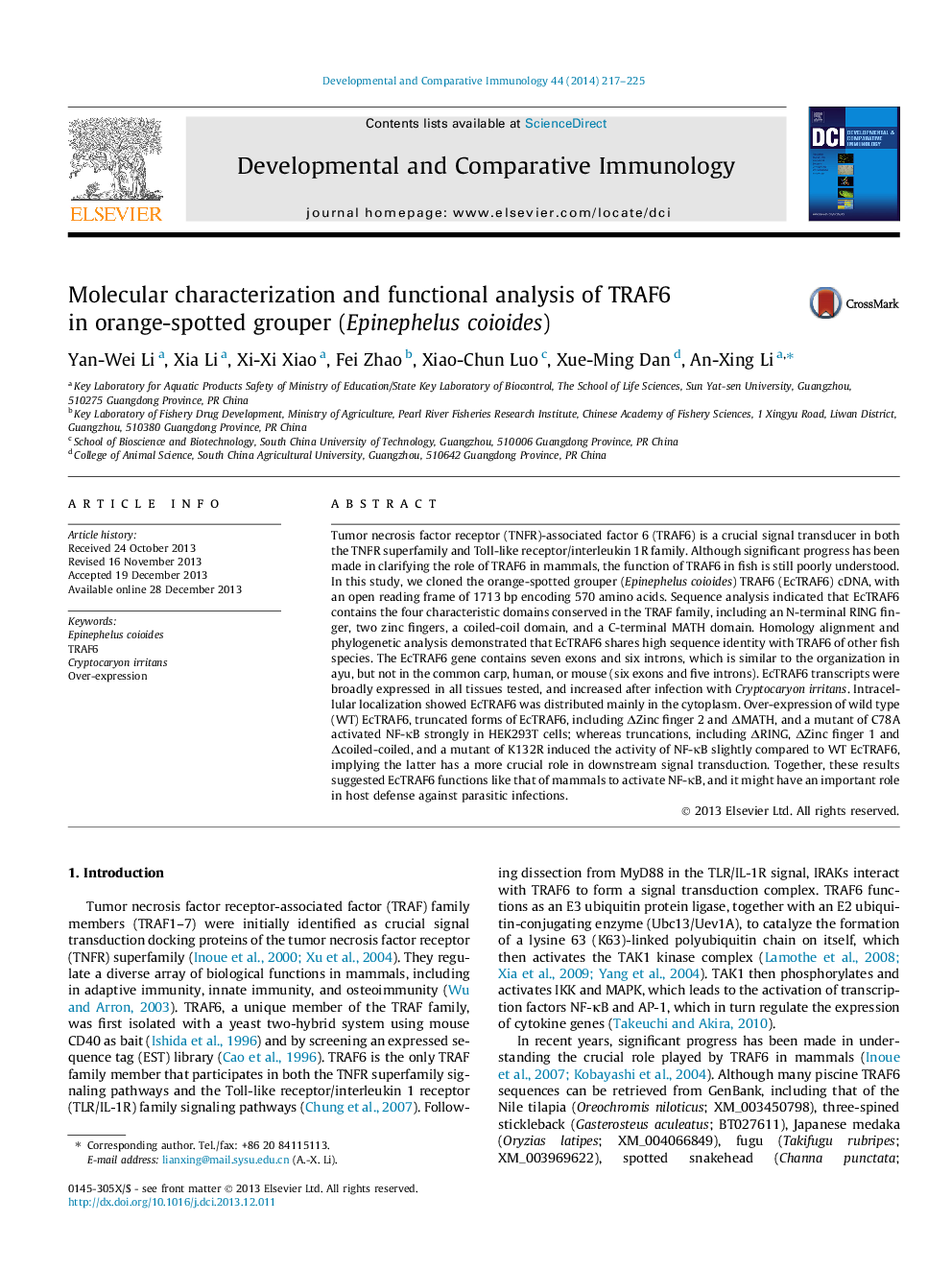| Article ID | Journal | Published Year | Pages | File Type |
|---|---|---|---|---|
| 2429266 | Developmental & Comparative Immunology | 2014 | 9 Pages |
•Full-length TRAF6 cDNA and gene was isolated from the orange-spotted grouper.•It showed high sequence identity and structural conservation with other TRAF6.•EcTRAF6 expression was upregulated after infection with Cryptocaryon irritans.•EcTRAF6 localized mainly in the cytoplasm.•Over-expression of EcTRAF6 can induce the activity of NF-κB.
Tumor necrosis factor receptor (TNFR)-associated factor 6 (TRAF6) is a crucial signal transducer in both the TNFR superfamily and Toll-like receptor/interleukin 1R family. Although significant progress has been made in clarifying the role of TRAF6 in mammals, the function of TRAF6 in fish is still poorly understood. In this study, we cloned the orange-spotted grouper (Epinephelus coioides) TRAF6 (EcTRAF6) cDNA, with an open reading frame of 1713 bp encoding 570 amino acids. Sequence analysis indicated that EcTRAF6 contains the four characteristic domains conserved in the TRAF family, including an N-terminal RING finger, two zinc fingers, a coiled-coil domain, and a C-terminal MATH domain. Homology alignment and phylogenetic analysis demonstrated that EcTRAF6 shares high sequence identity with TRAF6 of other fish species. The EcTRAF6 gene contains seven exons and six introns, which is similar to the organization in ayu, but not in the common carp, human, or mouse (six exons and five introns). EcTRAF6 transcripts were broadly expressed in all tissues tested, and increased after infection with Cryptocaryon irritans. Intracellular localization showed EcTRAF6 was distributed mainly in the cytoplasm. Over-expression of wild type (WT) EcTRAF6, truncated forms of EcTRAF6, including ΔZinc finger 2 and ΔMATH, and a mutant of C78A activated NF-κB strongly in HEK293T cells; whereas truncations, including ΔRING, ΔZinc finger 1 and Δcoiled-coiled, and a mutant of K132R induced the activity of NF-κB slightly compared to WT EcTRAF6, implying the latter has a more crucial role in downstream signal transduction. Together, these results suggested EcTRAF6 functions like that of mammals to activate NF-κB, and it might have an important role in host defense against parasitic infections.
